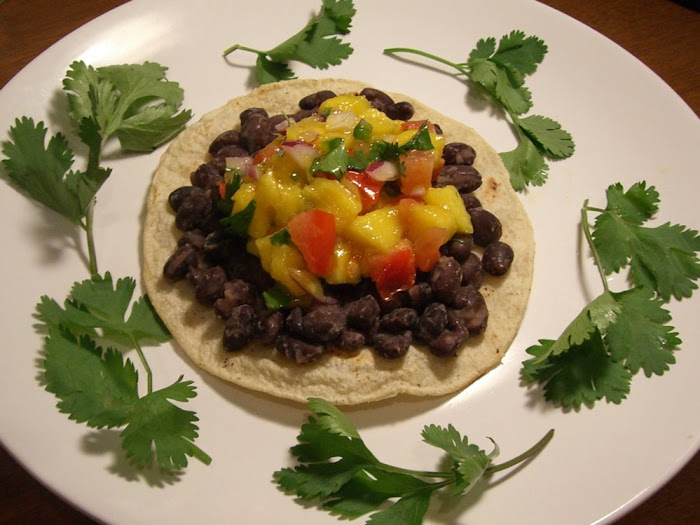Includes great links!! SAVED THEM!!
When it comes to food, most parents are concerned with safety, health and getting children to eat what's good for them. Now that the market for certified organic food is well established, with an annual U.S. growth rate of over 20 percent, the next big trend may be going local. "If price and appearance are the same, we found that consumers prefer to buy food that's locally grown," says Rich Pirog, coauthor of a 2003 study at the Leopold Center for Sustainable Agriculture at Iowa State University. "People want to know where their food comes from," Pirog adds. This knowledge can promote safter food choices.
For instance, during last year's outbreak of hepatitis in scallions imported from Mexico, you could safely buy scallions from local farmers. "More widely traveled foods are spreading deadly infections," the Baltimore Sun reported this spring, pointing to an inadequate U.S. inspection system for burgeoning food imports. In addition, overcrowding on our industrial-sized animal farms contributes to food contamination, Dr. Robert Lawrence, a professor of preventive medicine at the Johns Hopkins School of Public Health, told the Sun. The main appeal of local food to consumers lies in its freshness, Pirog notes, explaining that local produce is picked at peak ripeness, rather than prematurely and often rock hard. Some produce that is shipped long-distance is treated with fungicides, he adds. "Watch a crate of Chilean grapes being unpacked, and you'll notice that the boxes contain sulfur-dioxide pads." And, unlike food that's transported long distances, local food doesn't squander fossil fuels.
There are now "farm to school" lunch programs in 400 school districts and 22 states, including one starting up in Madison, Wisconsin, where three pilot elementary schools are serving locally grown produce on special days. Farming can also provide an ideal vehicle for hands-on, experiential learning, as in the Edible Schoolyard program started by restaurateur Alice Waters in Berkeley, California, where students at a local school learn to grow, prepare and love fresh fruits and vegetables in an organic garden and cooking classroom.
Although these efforts start small, the need is great. Pound for pound, children not only consume more food and water than adults; if they're hit with toxicants during critical windows of development, diseases can occur later in life. But feeding kids healthy food can be difficult when you can't always find or afford organic, and are up against a food industry spending billions of dollars annually to convince kids that products low in nutrition and high in sugars and fats are cool. Since the 1970s, when the U.S. adopted a farm policy resulting in cheap corn and corn-syrup sweeteners, Americans have been eating about 200 extra calories a day, Michael Pollan writes in The New York Times Magazine. No wonder 64 percent of us are overweight.
Still, you can improve the odds each time you shop for and prepare a meal. Here are seven small ways that add up to big change:
- 1. Buy Organic Where It Counts Most
Produce
Recognizing that it's not possible to eat organic produce 100 percent of the time, a 2003 Environmental Working Group (EWG) report helps consumers prioritize. EWG's Shopper's Guide identifies the 12 fruits and vegetables that are most often contaminated by pesticide residues and thus best bought organic: apples, bell peppers, celery, cherries, grapes (imported), nectarines, peaches, pears, potatoes, red raspberries, spinach, strawberries.
Get EWG's guide at foodnews.org and The Green Guide's mail-order organic food list and wallet-size produce guide
Animal Products
For meat, eggs and dairy, certified organic is your best choice, because federal standards mandate 100 percent organic feed (eliminating the risk of mad cow disease, for one). But when organic isn't available or affordable, ask the following questions: Was the animal fed only grass and/or 100 percent vegetarian grain? Were growth hormones used (in cattle)? Were antibiotics routinely given? Were the animals confined?
In addition, "If your local producer allows visits, we encourage people to go and check it out themselves," says Dr. Urvashi Rangan of Consumers Union.
See The Green Guide's meat and milk product reports and downloadable wallet guides to meat, poultry and eggs:
http://www.thegreenguide.com/signup/freemeatguide
http://www.thegreenguide.com/signup/poultry
http://www.thegreenguide.com/signup/eggs - 2. Buy Food Directly from Local Farms, and Ask Your Grocer to Sell Local Food Too
In a Community Supported Agriculture (CSA) group, each member buys a share of the entire harvest (usually $300-$600) from the farmer before the growing season starts, and is rewarded with weekly produce gathered at peak ripeness. There are more than 1,000 CSAs across the U.S.
Farmers markets also give you—and your children—a chance to talk to and support the people who grow local food. The USDA reports that there are over 3,100 farmers markets nationwide, a number that increased 79 percent between 1994 and 2002.
The environment benefits, too. According to the Leopold Center's 2003 report on food miles in Iowa, "Checking the Food Odometer," when produce is sold locally in Iowa it travels an average of 56 miles. When sold elsewhere, it travels an average of 1,494 miles (or nearly 27 times farther). And an estimated 39 percent of fruits, 40 percent of lamb and 78 percent of fish and shellfish that Americans consume come from abroad. "We're all trying to minimize our footprint, and the way to do that is to buy locally," Rich Pirog says.
For a directory of CSAs, visit http://www.csacenter.org/.
To find your nearest farmers market, visit www.ams.usda.gov/farmersmarkets.
To find an organic farm near you, see http://www.localharvest.org/.
A good idea that may catch on nationwide: A virtual "farmers market" is thriving in Georgia via http://www.locallygrowncoop.com/.
See the Chefs Collaborative wallet-size guide to restaurants in 32 states that serve local, sustainably produced food. At http://www.stonyfield.com/Recipes/ChefsCollaborative.cfm. - 3. Sidestep Easily Contaminated Foods
Contaminated food causes an estimated 76 million illnesses and 5,000 deaths per year, according to the Centers for Disease Control and Prevention (CDC). To be safe, limit consumption of:
Raw or undercooked meat (E. coli is one threat), shellfish (vibrio bacteria), poultry (campylobacter) and eggs (salmonella). The CDC also warns against foods such as ground beef, because it mingles products from many animals, and cold cuts, which can be contaminated with listeria.
Raw, unwashed produce and unpasteurized fruit juice can also carry E. coli, hepatitis and other diseases.
For more info, see http://www.foodsafety.gov/. - 4. Avoid Unhealthy Fats
Fifteen percent of Americans 6 to 19 years old are overweight—and the percentage is growing. Although you can avoid saturated fats and cholesterol by reading labels, trans fatty acids, which also contribute to heart disease, will not have to be listed until January 2006. Trans fat lurks in the very foods most heavily marketed to children: French fries, candy bars, cookies, baked goods, chips and pretzels. Best to limit these, as well as commercially prepared salad dressing, vegetable shortenings and anything containing "hydrogenated" or "partially hydrogenated" vegetable oil.
In addition to its being saturated and artery-clogging, animal fat should be consumed less because it harbors dioxins, chemicals linked to cancer and endocrine and immune-system disorders. "Because dioxins persist in the body, what your child eats now will be with him or her for many years to come," cautions Dr. Gina Solomon, a Natural Resources Defense Council (NRDC) senior scientist. The fattier the animal product, the more likely it is to have higher levels of these chemicals, Solomon says. "Personally, I select low-fat or non-fat dairy products wherever possible," she adds. If you eat meat, purchase lean cuts, trimming away skin and visible fat.
See the USDA's trans fat label page at www.cfsan.fda.gov/~dms/transfat.html.
For the National Academy of Sciences 2003 report on dioxins in our food supply, go to www.nap.edu/books/0309089611/html. - 5. Avoid Nervous-System Toxicants in Fish
New fish warnings seem to be emerging every few weeks, most recently about polychlorinated biphenyls (PCBs) in farmed salmon and tuna high in mercury. Both chemicals can harm brain development. "And mercury accumulates in muscle meat instead of in fat, so you can't trim it away," Solomon points out.
Unique to The Green Guide is a wallet guide listing fish and seafood as "no," "sometimes" and "yes" based on both human health and environmental criteria . See The Green Guide's downloadable wallet guide to fish: www.thegreenguide.com/signup/fishpicks. - 6. Demand Healthier Food and Drink at Schools
Many strapped school systems rely on revenue from sales of such items as candy bars and sugary drinks in vending machines and fast food supplied by Pizza Hut, available in 98 percent of our nation's senior high schools. Americans ingested 55 gallons of soft drinks per person in 2001, more than any other beverage. The impact on kids' waistlines is all too evident, but all this sugar is also promoting tooth decay.
Ask your PTA and school administration to change; get ideas and success stories from a kit available through the Center for Science in the Public Interest (CSPI) at www.cspinet.org/schoolfoods.
For USDA how-to's, see fns.usda.gov/tn/Resources/changing.html; to go local, visit www.fns.usda.gov/cnd/lunch and click on "Small farms/school meal initiative."
Get healthy-vending-machine guidelines at www.healthcollaborative.net/fitcity/FitCityhome.html. - 7. Talk to Kids About How Ads Pitch Food at Them
You're up against big bucks—and the wiliest of marketing minds—when you try to coax your kid away from junk food. According to a report released in February 2004 by an American Psychological Association (APA) task force, the average child in our country views 40,000 TV commercials a year, with the most common products marketed being "sugared cereals, candies, sweets, sodas and snack foods," says task force chair, Brian Wilcox, Ph.D. It also found that viewers under the age of five can't reliably distinguish between programming and ads, while those younger than eight tend to accept ads "as truthful and accurate because they fail to comprehend the advertiser's motive to exaggerate . . ."
What's a parent to do? Limit television time. Watch with your children, and point out and discuss the difference between programs and commercials. Finally, every chance you get this summer, take kids to a farmstand, pick a ripe, sweet fruit and give them a bite of the real thing.
See www.apa.org/releases/childrenads.html, and CSPI's "Pestering Parents" report at www.cspinet.org/reports.














No comments:
Post a Comment